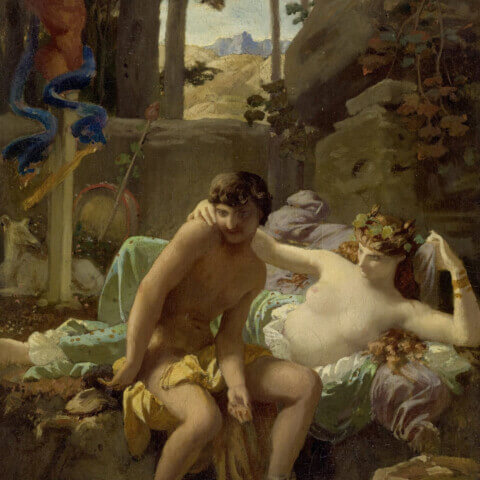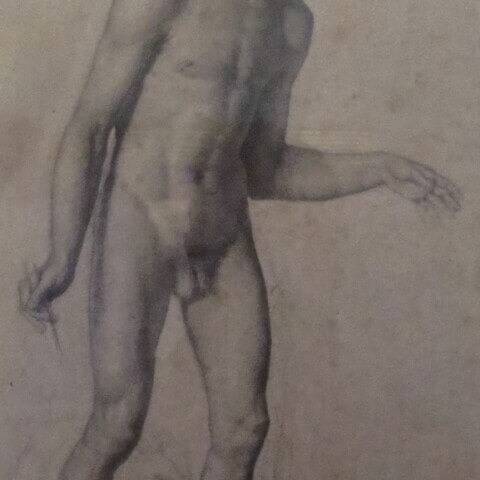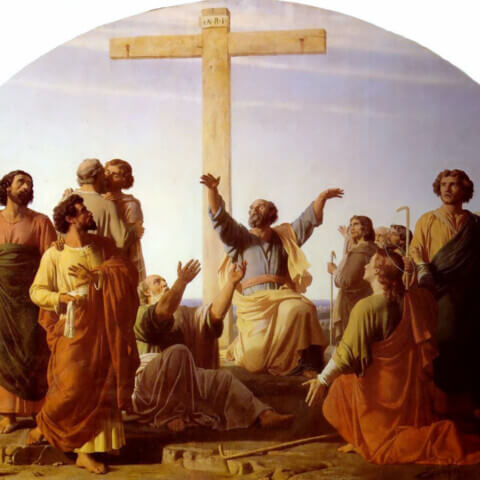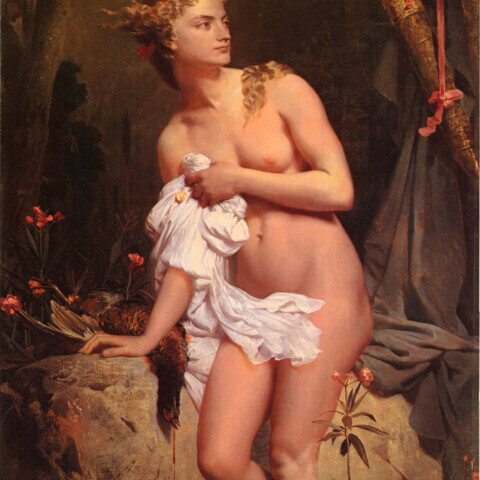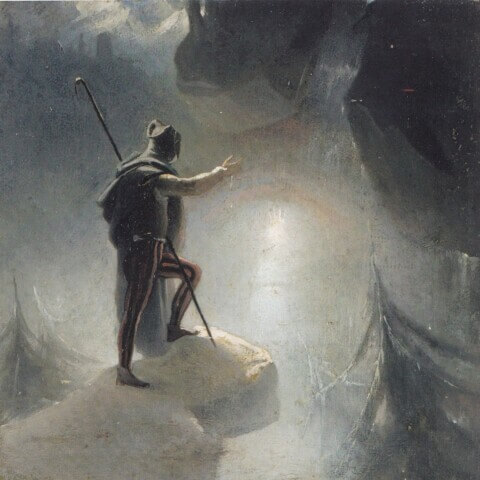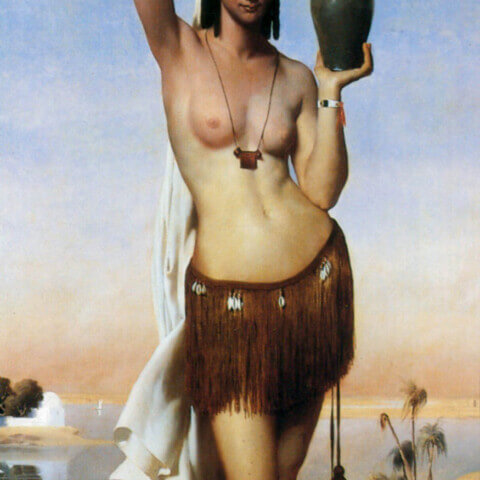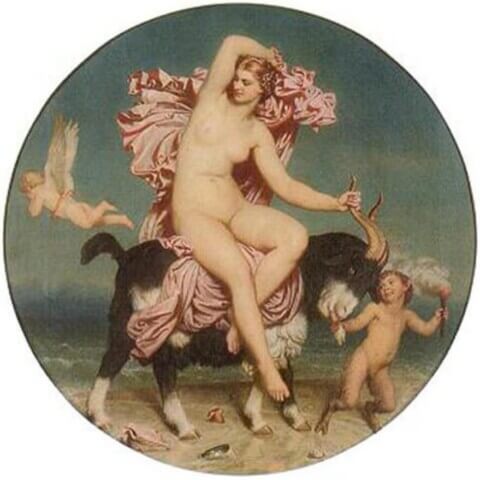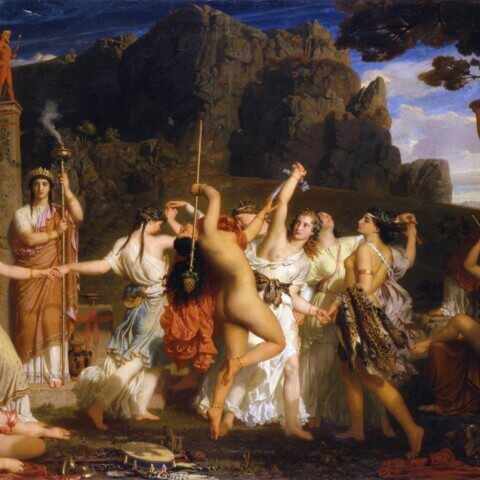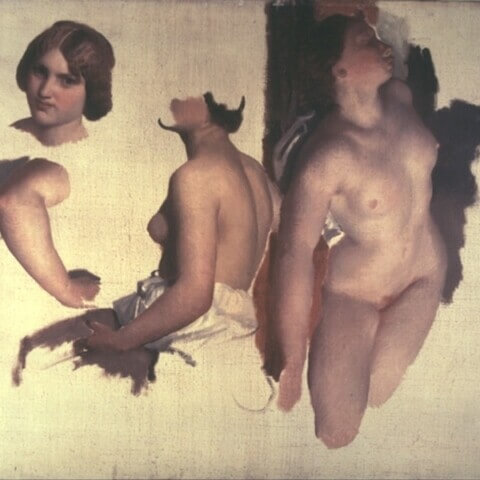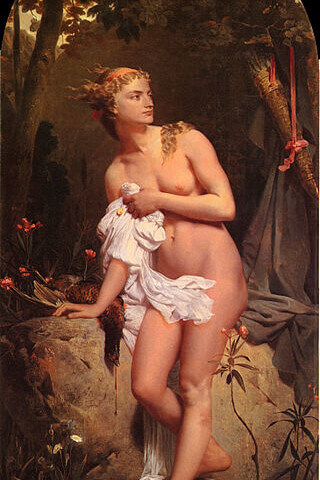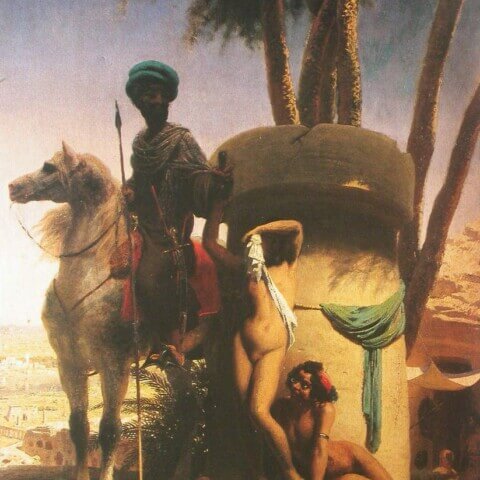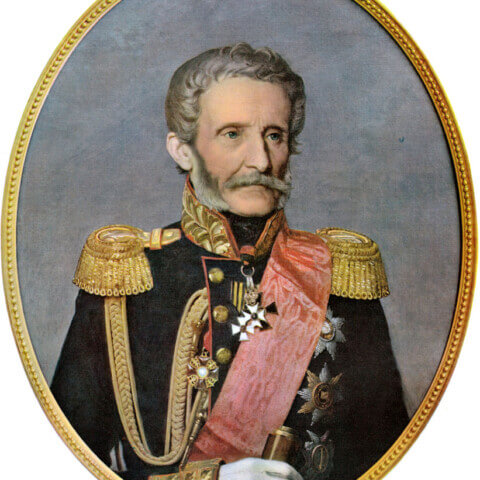Marc Gabriel Charles Gleyre
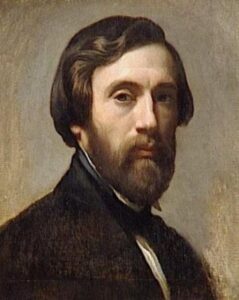
Marc-Gabriel-Charles Gleyre (2 May 1806 – 5 May 1874) was a Swiss artist renowned for his history paintings, whose significance rests largely on his role as a teacher of many well-known artists of the 19th century. His classical style, which prioritized order, harmony, and simplicity, was a profound influence on his students, which included illustrious names such as Auguste Renoir, Frédéric Bazille, Alfred Sisley, and Jean-Frédéric Bazille, leading figures of the Impressionist movement.
Gleyre was born in Chevilly, near Lausanne, Switzerland. After receiving initial training in Lausanne, he moved to Paris in 1825 to further his artistic education at the prestigious Ecole des Beaux-Arts, under the tutelage of Louis Hersent.
In 1834, he embarked on a journey to the Middle East, spending time in Lebanon, Egypt, and Greece. This journey had a profound effect on his work, providing him with visual motifs and themes that would recur throughout his career, evident in works like “Evening” (1843) where he combined a Hellenistic subject with Orientalist elements.
Upon his return to Paris, Gleyre became a respected academic painter, establishing his own studio in 1843. He upheld the traditions of classical art at a time when the French art world was beginning to shift toward realism and impressionism. His works, such as “The Dance of the Bacchantes” (1849) and “The Deluge” (1856), demonstrate a harmonious blend of precision, grandeur, and romantic sensibility.
Despite his success as a history painter, Gleyre’s long-lasting impact was his work as a teacher. He took over the studio of Paul Delaroche in 1843 and taught many future luminaries of French art. Gleyre’s teachings, though rooted in classicism, did not stifle his students’ creativity. He emphasized technical proficiency but also encouraged individual expression, which was instrumental in the development of the new aesthetic directions his students would later take.
Gleyre retired from teaching in 1864 and largely withdrew from the art world. He died a decade later, in 1874, in Paris. Although somewhat overshadowed by his more famous students during his lifetime, Gleyre’s work and teaching have been recognized for their significant influence on the development of French art in the late 19th century. His pieces can be found in prominent museums and galleries worldwide, including the Louvre and Musée d’Orsay in Paris.

